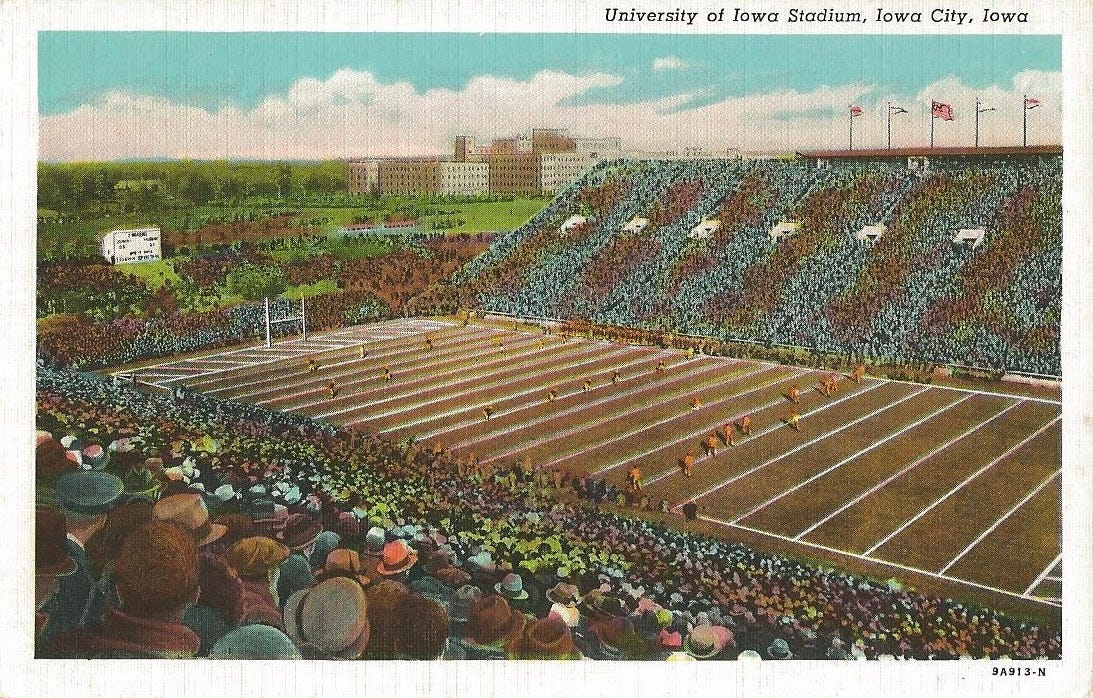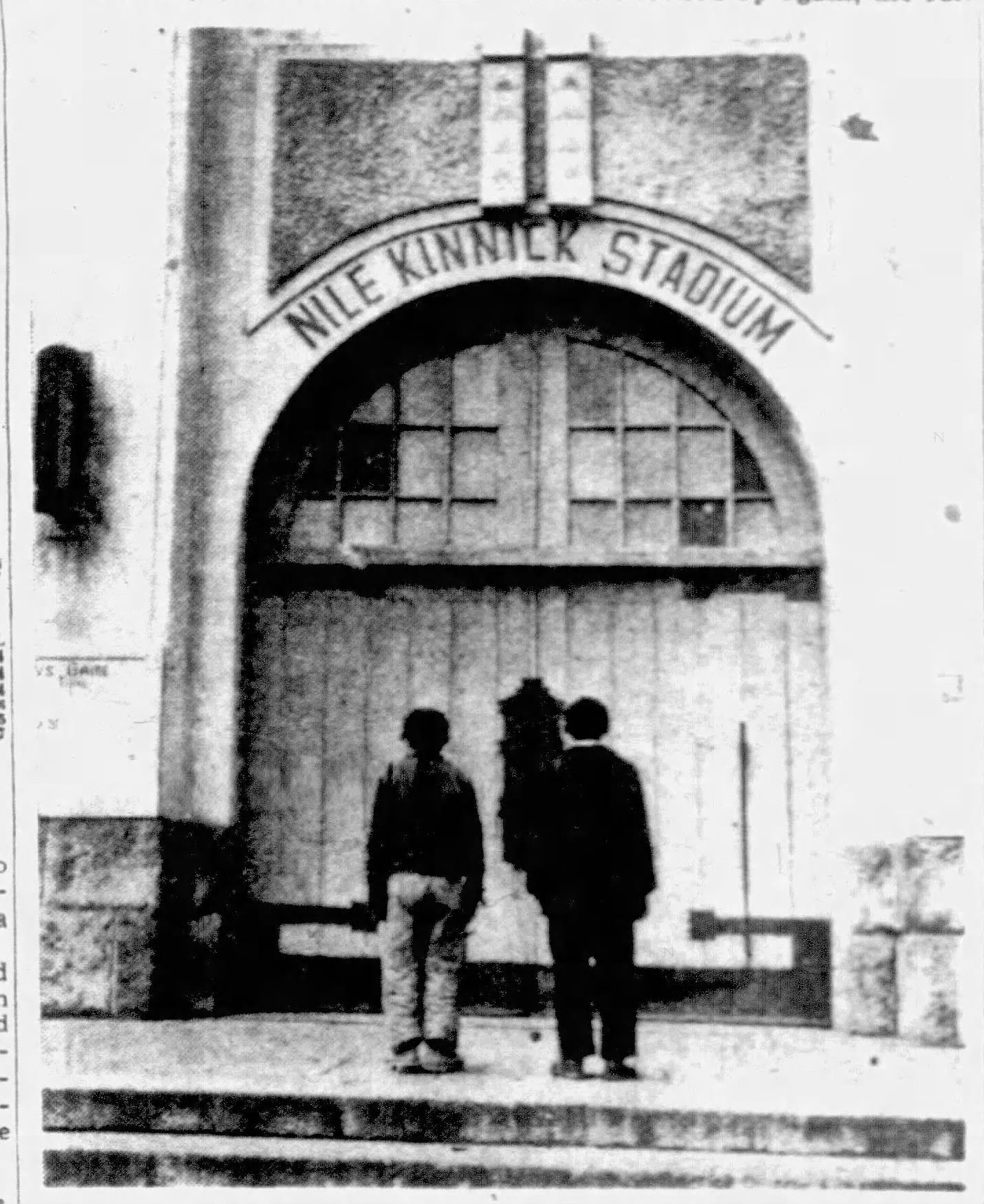Today's Tidbit... The First Nile Kinnick Stadium
Big Ten and other college football fans are familiar with Nile Kinnick Stadium on the campus of the University of Iowa. The stadium is named after Nile Kinnick, the 1939 Heisman Trophy winner. The fifth person to receive the Heisman, he was the first to perish when he ditched his Grumman F4F Wildcat during a training flight off the USS Lexington in 1943. The plane sunk shortly afterward, presumably with Kinnick in it.
The Iowa student body voted to rename their stadium in his honor in November 1945, proposing that the change occur on Dad's Day 1946. However, the university did not take that step until 1972, reasoning that doing so would single out Kinnick’s sacrifice more than others who died during the war.
Although the university took more than a quarter of a century to rename its stadium, the U.S. Eighth Army's Special Service Section moved a bit faster during its occupation of Japan following WWII. In 1946 or 1947, they named one of the top recreational facilities in Tokyo after Kinnick.
The Japanese built the stadium for the 1940 Olympics, which never occurred, and named it Meiji Stadium to honor Emperor Hirohito's grandfather. Sources variously report that the stadium seated 25,000, 40,000, or 65,000 people. Equipped with a cinder track, it hosted track meets, soccer matches, and other events for U.S. military personnel, their families, and Japanese civilians.
It was also a primary location for regular-season football games among the armed services in Tokyo, hosting annual games on Thanksgiving Day. It gained its greatest fame for the New Year's Day Rice Bowls, which decided the championship among service teams based in Japan each year. Those games recreated many of the comforts of football games back home, including hot dogs and game programs.
Likely, the most famous footballers to set foot in Niles Kinnick Stadium did so for an exhibition in June 1951. West Point's coaching staff toured Japan that summer, running coaching clinics and exhibitions, which meant that head coach Red Blaik was there with his assistants, including Murray Warmath and Vince Lombardi.

The stadium reverted to Japanese civilian use in 1953 when the U.S. occupation of Japan ended. At that point, the stadium reacquired its original name, Meiji Stadium, but it was soon demolished to make way for Tokyo Olympic Stadium, site of the 1956 Olympics.
Earlier articles about overseas football in the military include:
Click here for options on how to support this site beyond a free subscription.






